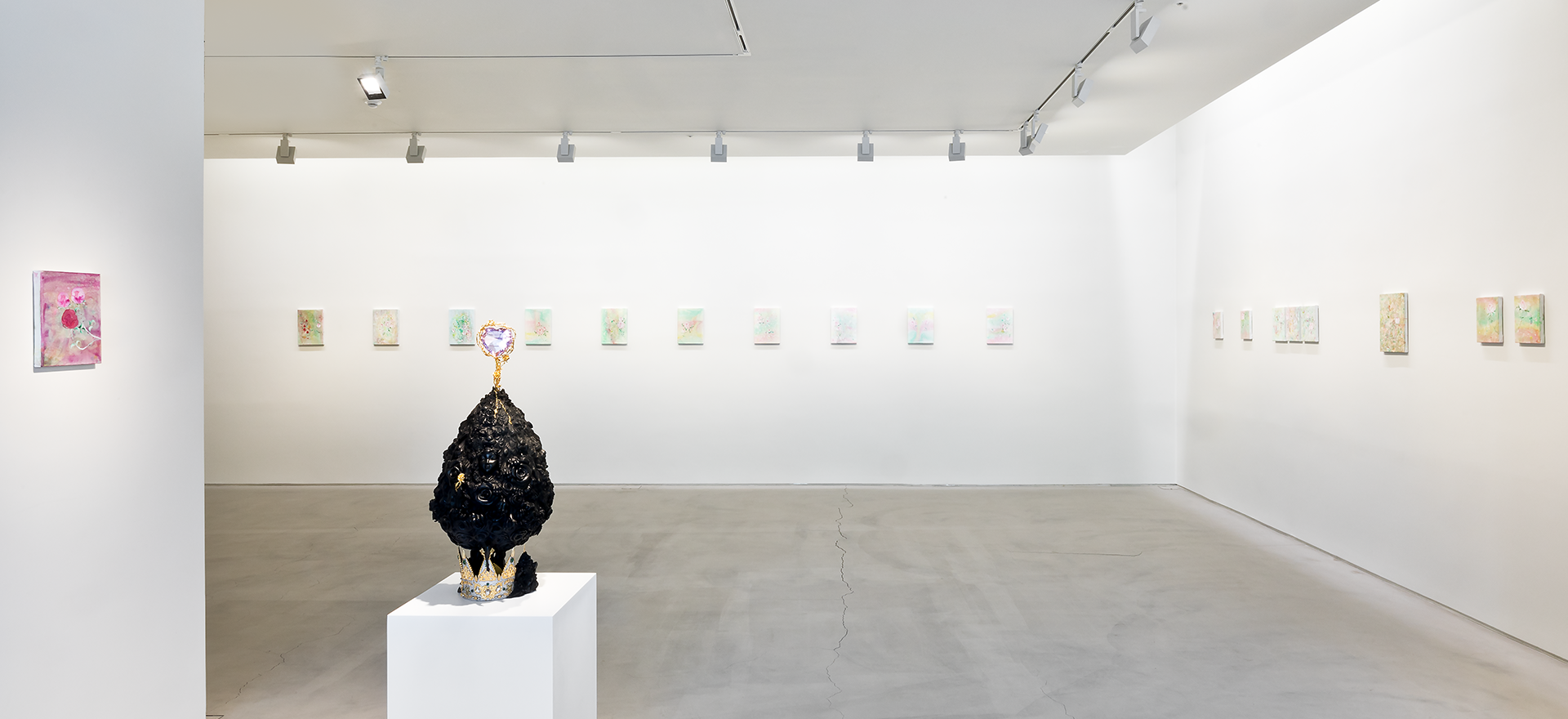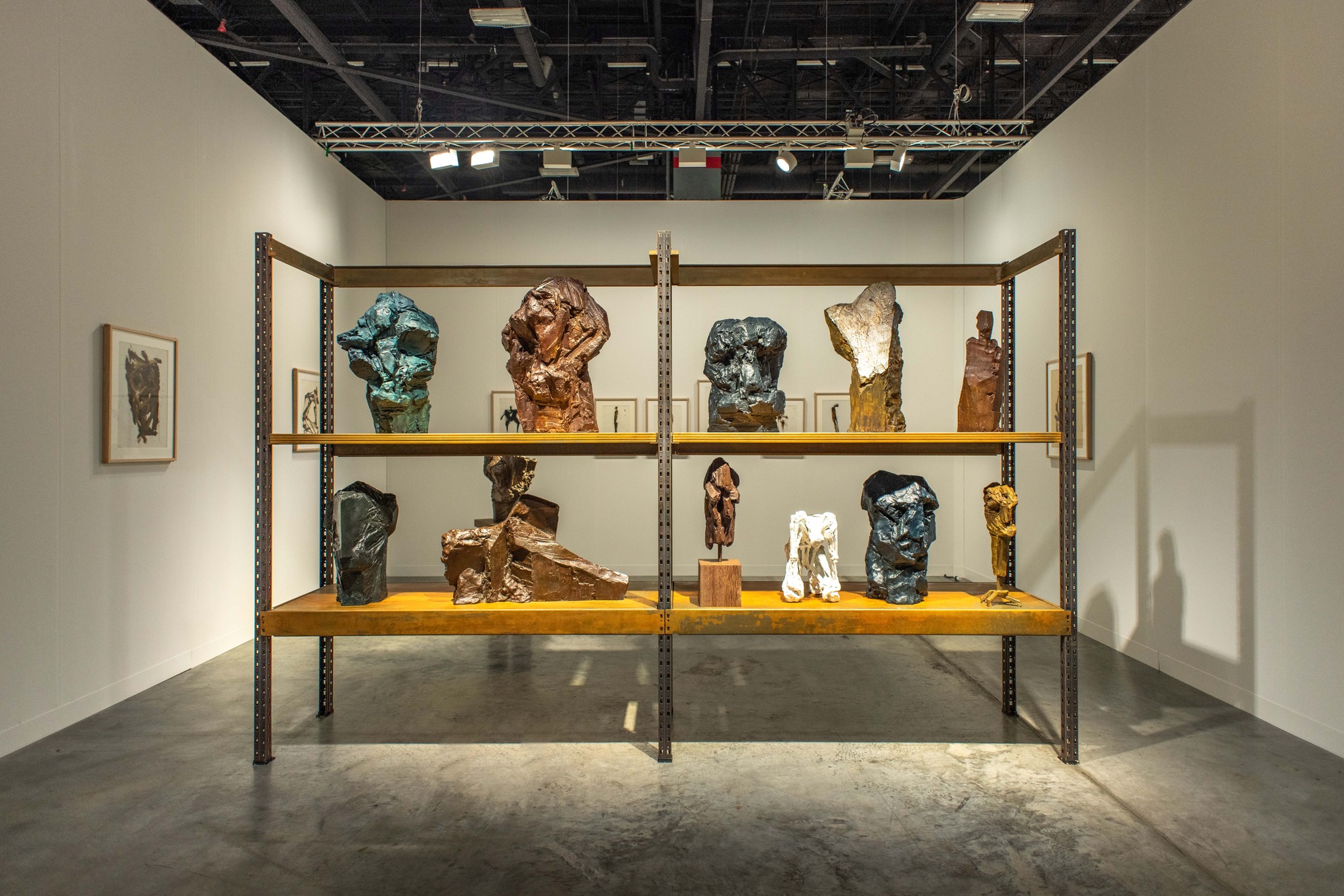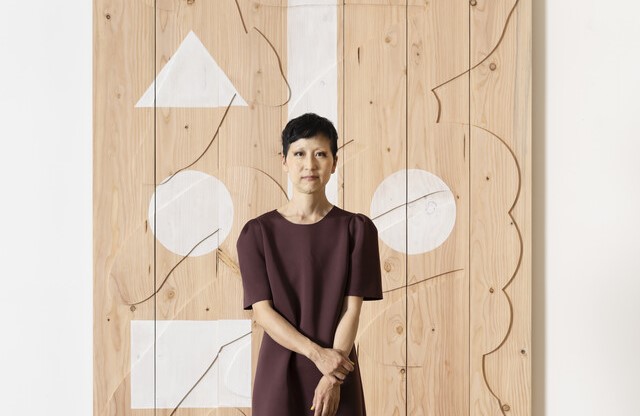Meekyoung Shin (b. 1967) has been working between London and Seoul, using "soap" instead of traditional sculptural materials to recreate historical artifacts and artworks that represent specific cultures from a contemporary perspective. Through the physical nature of soap, which loses its form over time and under environmental conditions, Shin visualizes the "temporality" of culture and history by paralleling the weathering of artifacts and artworks over time.

Meekyoung Shin, Translation – Venus Project, 1998 (restored in 2009) ©MMCA
Shin
began contemplating cultural identity during her studies in the UK. Although
she learned about Western art and history, she felt the cultural differences
within it, leading her to present her unique "translation" of various
religious, cultural, and historical issues as a 21st-century Asian artist.
The ‘Translation’
series, which started from this exploration, involves the artist recreating
artifacts and artworks she has encountered using soap. Shin was inspired when
she saw the restoration of a Neoclassical Bathing Venus statue in the main hall of her
school in 1997. Observing the worn traces on the statue, she sensed the passage
of time and became intrigued by how the statue had lost its original context.
She described this decontextualization process as "artifactification"
and recreated it using soap, contrasting its fragile nature with solid marble.
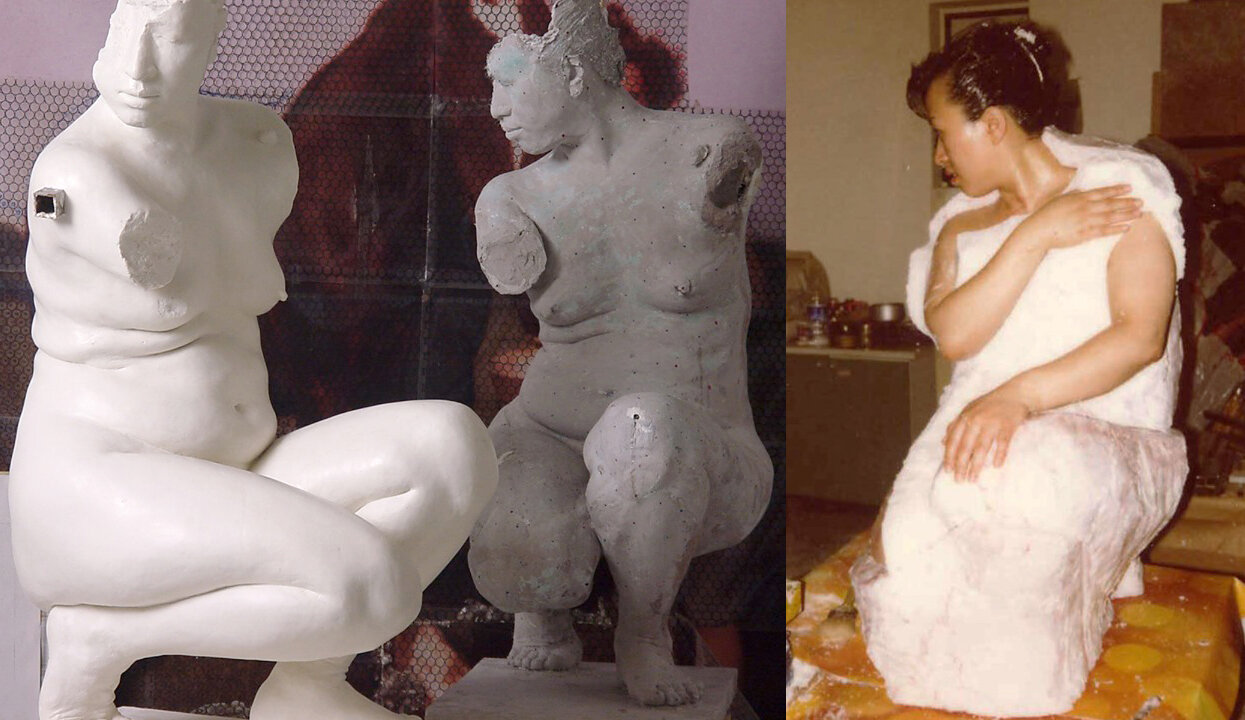 Making the Translation – Crouching Venus,
©Meekyoung Shin
Making the Translation – Crouching Venus,
©Meekyoung ShinEarly installations of the ‘Translation’ series featured soap sculptures placed alongside their original counterparts. These soap reproductions of classical sculptures may visually resemble the originals but are distinct through their scent. From 2000 onwards, the series began exploring varying distances between the original and the replica more deliberately. For instance, Shin would reenact the poses of the original sculptures, casting her own body in plaster to create the soap replicas.
 Meekyoung Shin, Toilet Project,
2004-ongoing ©Korean Artist Project
Meekyoung Shin, Toilet Project,
2004-ongoing ©Korean Artist ProjectSince 2004, she has been working on the ‘Toilet Project’, installing soap sculptures in toilet. These sculptures, shaped like Buddha statues or Greek figures, invite visitors to touch and erode them, reflecting how the meaning of cultural and religious icons can shift based on the cultural context of the space they occupy.
 Meekyoung Shin, Toilet Project,
2004-2013 ©MMCA
Meekyoung Shin, Toilet Project,
2004-2013 ©MMCAFor example, placing a Buddha soap sculpture in a toilet in a country with a high Buddhist population might cause discomfort, while the same sculpture placed in the West might not been an issue. The worn soap sculptures are later displayed in museums like historical artifacts.
 Meekyoung Shin, Translation-Vase,
2006-2013 ©MMCA
Meekyoung Shin, Translation-Vase,
2006-2013 ©MMCAThe ‘Translation–Vase’ series,
first exhibited at the Asia House in London in 2006, involves soap replicas of
ornate Chinese ceramics. These original vases were exported to the West from
the 17th century and were often crafted to appear even more Chinese to suit
Western tastes.
Shin viewed these vases as examples of
"distorted translations" and placed the soap replicas on transport
crates instead of traditional plinths to highlight their journey. By using
materials that erode under environmental conditions, Shin challenges the
authority of artifacts, artworks, and museums by presenting them in an
unfinished state.
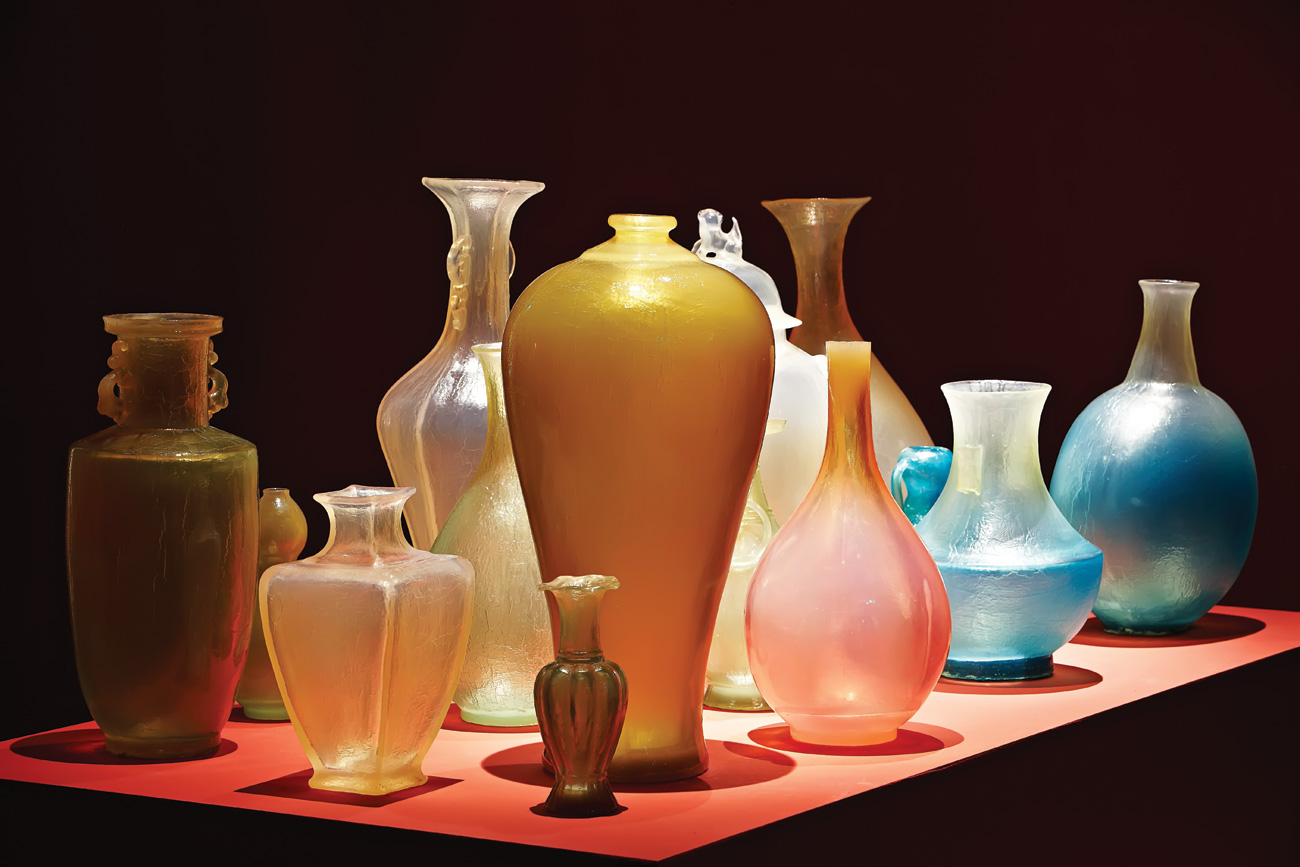 Meekyoung Shin, Ghost Series,
2007-2013 ©MMCA
Meekyoung Shin, Ghost Series,
2007-2013 ©MMCAThrough creating the 'Translation–Vase' series, Shin realized that soap is more solid than she initially thought, leading her to hollow out the interiors of the soap sculptures to mimic glass-like transparency. This work, named the ‘Ghost Series’, removes surface details, leaving only the shape and semi-translucent color of the vases, stripping away both material solidity and cultural context, resulting in ghost-like entities that linger as faint forms once the originals have disappeared.
 Meekyoung Shin, Written in Soap: A Plinth
Project (Cavendish Square, London), 2012-ongoing ©MMCA
Meekyoung Shin, Written in Soap: A Plinth
Project (Cavendish Square, London), 2012-ongoing ©MMCAIn 2008,
an encounter with an empty plinth in a park inspired her to start the Written in
Soap: A Plinth Project (2012–), where she
recreates and installs soap versions of original sculptures on outdoor plinths.
One such
plinth originally held an equestrian statue commemorating the Duke of
Cumberland, a war hero and the third son of King George II, which was later
removed due to backlash over the Duke’s role in the Scottish massacre.
After
four years of research and work, Shin recreated the statue in soap and placed
it back on the plinth, sparking political interpretations and demands for its
removal.
 Meekyoung Shin, Written in Soap: A Plinth
Project (MMCA Gwacheon), 2013-2014 ©MMCA
Meekyoung Shin, Written in Soap: A Plinth
Project (MMCA Gwacheon), 2013-2014 ©MMCAShin
continues to replicate the once-singular equestrian statue and install these
soap versions worldwide. These soap monuments not only naturally weather over
time but also break free from their specific historical contexts, scattering
across the globe.
Shin
evokes the ghosts of forgotten history, showing how a single event can be
variably interpreted across different times and spaces. Like museum artifacts,
historical facts can be decontextualized, repeatedly mistranslated, and
reinterpreted to form new meanings.
"Visiting
museums made me think that ‘artifacts are not made; they become.’ Nothing in a
museum was originally intended to be an artifact.
Regardless
of its initial purpose, it is the passage of time, burial, and eventual
rediscovery that elevate something to artifact status on a museum shelf. Once
something becomes an artifact, it loses its original function and becomes
nothing but an artifact.
Similarly,
soap sculptures lose their function once displayed in an exhibition, gaining
new historicity depending on the context in which they are placed.” (MMCA Artist Talk | Meekyoung Shin)

신미경 작가 ©메종코리아
Meekyoung Shin studied sculpture and
obtained bachelor’s and master’s degrees at Seoul National University, and
furthered her studies at the Slade School of Fine Arts in London. During her graduate
studies, Shin gained attention for her soap sculpture performances, leading to
her invitation to the exhibition at the Hayward Gallery in London in 1998,
where she recreated Greek sculptures from the British Museum in soap. In 2004,
she continued her soap sculpture performances in the lobby of the British
Museum. Recently, she has expanded her exploration beyond soap, delving into
new materials such as ceramics, Jesmonite, bronze, and resin.
In South Korea, she has
held solo exhibitions at institutions such as ARKO Art Center, Space K, the
National Museum of Modern and Contemporary Art Korea, Seoul National University
Museum of Art, and Sungkok Art Museum. Internationally, she has exhibited at
Hakgojae Gallery in Shanghai, China, and in the UK at Haunch of Venison,
London, Belton House, and Bristol Museum. In 2013, she was
References
- 올해의 작가상, 신미경 (Korea Artist Prize, Meekyoung Shin)
- 신미경, Meekyoung Shin (Artist Website)
- 국립현대미술관, 신미경 | 트랜스레이션 시리즈 | 2006-2013 (National Museum of Modern and Contemporary Art Korea (MMCA), Meekyoung Shin | Translation Series | 2006-2013)
- 더 아트로, 비하인드 더 뷰티 – 신미경 작가 인터뷰
- 국립현대미술관, MMCA 작가와의 대화 | 신미경 작가 (National Museum of Modern and Contemporary Art Korea (MMCA), MMCA Artist Talk | Meekyoung Shin)












